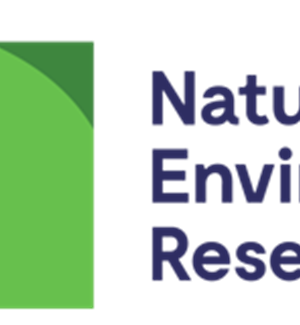- Plymouth Marine Laboratory - United Kingdom,
- University of Bath - United Kingdom
Biodegradable Bioplastics - Assessing Environmental Risk: Biodegradable bioplastics (BBPs) are a category of materials that offer considerable potential to reduce the global environmental challenge resulting from the accumulation of end-of-life plastic. BBPs are made from renewable carbon such as plant material (bioplastics) and as a consequence of their molecular structure and resulting properties are regarded to have enhanced rates of biodegradation compared to conventional plastics. Currently only around 1% of plastic production is in the form of bioplastics; driven by the potential advantages demand is growing rapidly. BBPs are already widely used in applications with substantive pathways to the natural environment (agricultural mulch film, textile fibres, beads in cosmetics). Yet our understanding about their fate in the natural environment is poorly understood, because key information on the kinetics of degradation and any potential environmental effects of their breakdown products (fragments and chemical additives) is lacking. Biodegradation has been demonstrated under specific conditions, such as commercial compositing, and there are associated standards, but studies indicate degradation can be slow or incomplete under natural conditions. This ambitious, yet highly tractable, 4-year research proposal brings together internationally recognised polymer scientists, marine and terrestrial biologists and ecotoxicologists from the Universities of Plymouth and Bath together with Plymouth Marine Laboratory, Project Partner Lenzing AG and an Advisory Group including representatives from Government agencies, BBP producers, commercial users (Sainsbury's and Riverford Organic Farms), Water Authorities as well as NGOs. Collectively the team will establish the fate of BBPs in the environment, their effect on organisms and ecosystem function and develop environmental risk assessments. We will characterise BBPs in terms of their composition (chemical structure, additives) as well as features that can be used to assess deterioration (molecular weight, thickness, strength) in the environment. We will then establish the fate of BBPs in marine and terrestrial environments in terms of rates of deterioration as well as the pathways and environmental accumulation of BBPs and their breakdown products. This will inform experiments to examine any associated direct effects of BBP deterioration on marine and terrestrial organisms (animals such as mussels and earthworms and plants such as herbs and grass) and to examine any indirect consequences on ecological and biogeochemical processes. Collectively, these outcomes, together with existing literature, will be used to evaluate how the fate and behaviour of BBPs in the environment relates to hazards in order to conduct a risk assessment to show at what concentration BBPs and their associated chemicals may have an impact on animals, their habitats, and how the ecosystem functions. Estimates of safe levels in soil and water will be derived as well as factors that add uncertainty and indicate priorities for future research. Outcomes in terms of potential risks, will be communicated alongside the benefits of BBPs - so as to provide a balanced perspective and help guide development for the next generation of BBPs. This will be disseminated by publications and stakeholder engagement, including: data sharing with OECD and Defra; a technical stakeholder workshop (industry, government, consultancy, NGOs. etc) and a training event - how to complete a risk assessment for plastics. There has been considerable media attention on plastic pollution and this has translated into an urgent call for action by the public. However, current understanding of the most appropriate actions is less clear and reliable information on the benefits and risks of novel materials such as BBPs, is lacking. Hence, this research is of critical importance to guide changes in commercial practice and policy responses, such as implementation of the 25 year Environment Plan.
Want to analyze based on this project via our analysis tool? Analyze this project
Knowledge Gaps
Environmental fate and behavior of plastic
Degradation
Characterization test methods
Environmental risk assessment (ERA)
Environmental effects and ecotoxicity
Publications




